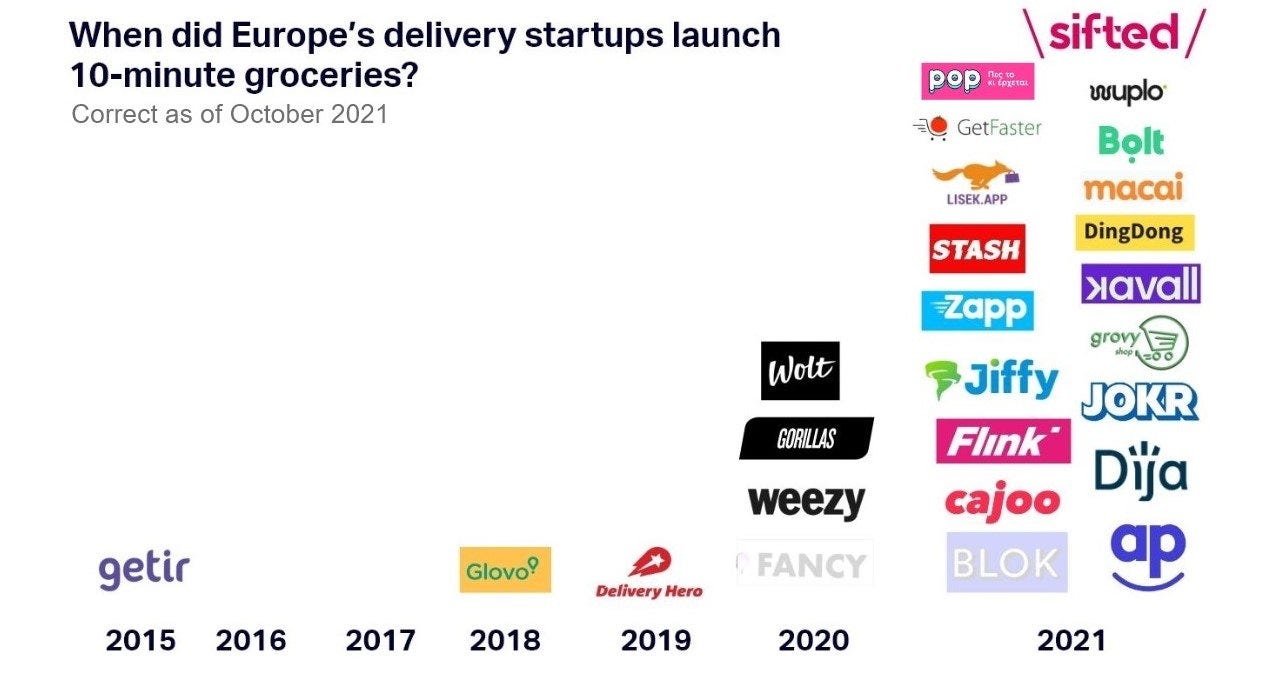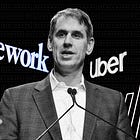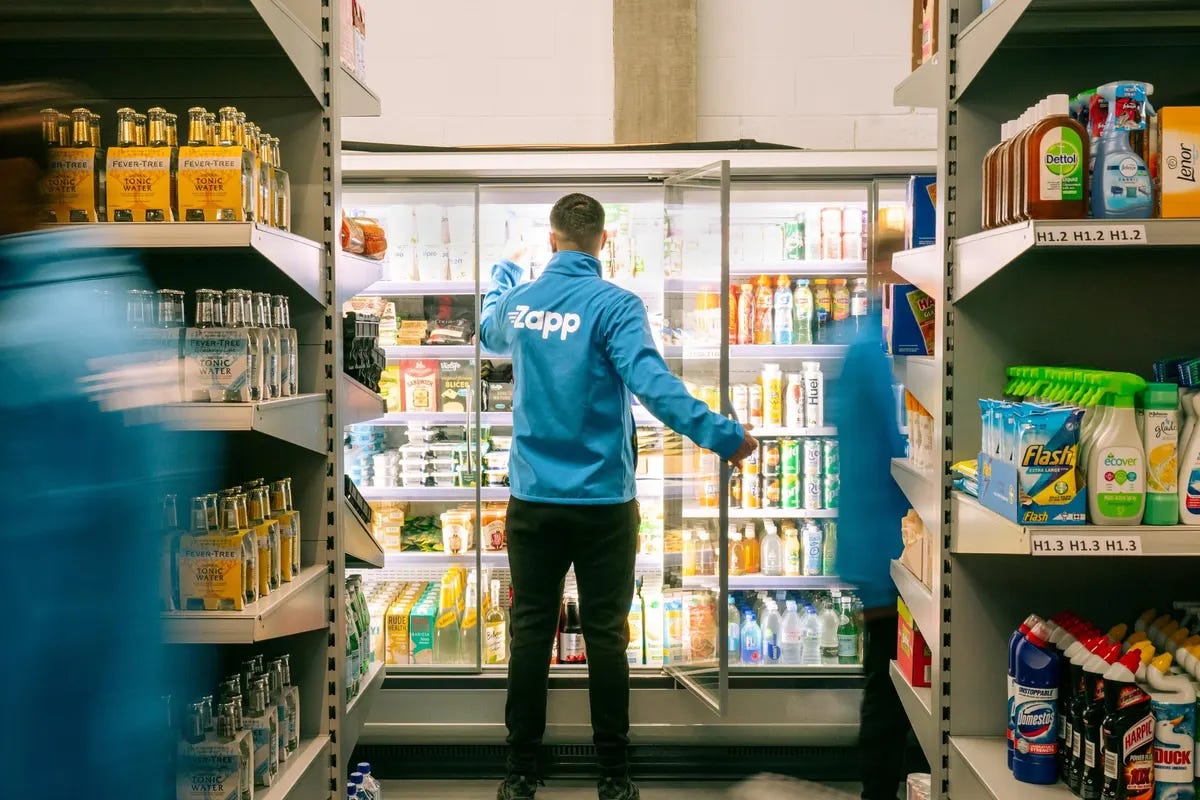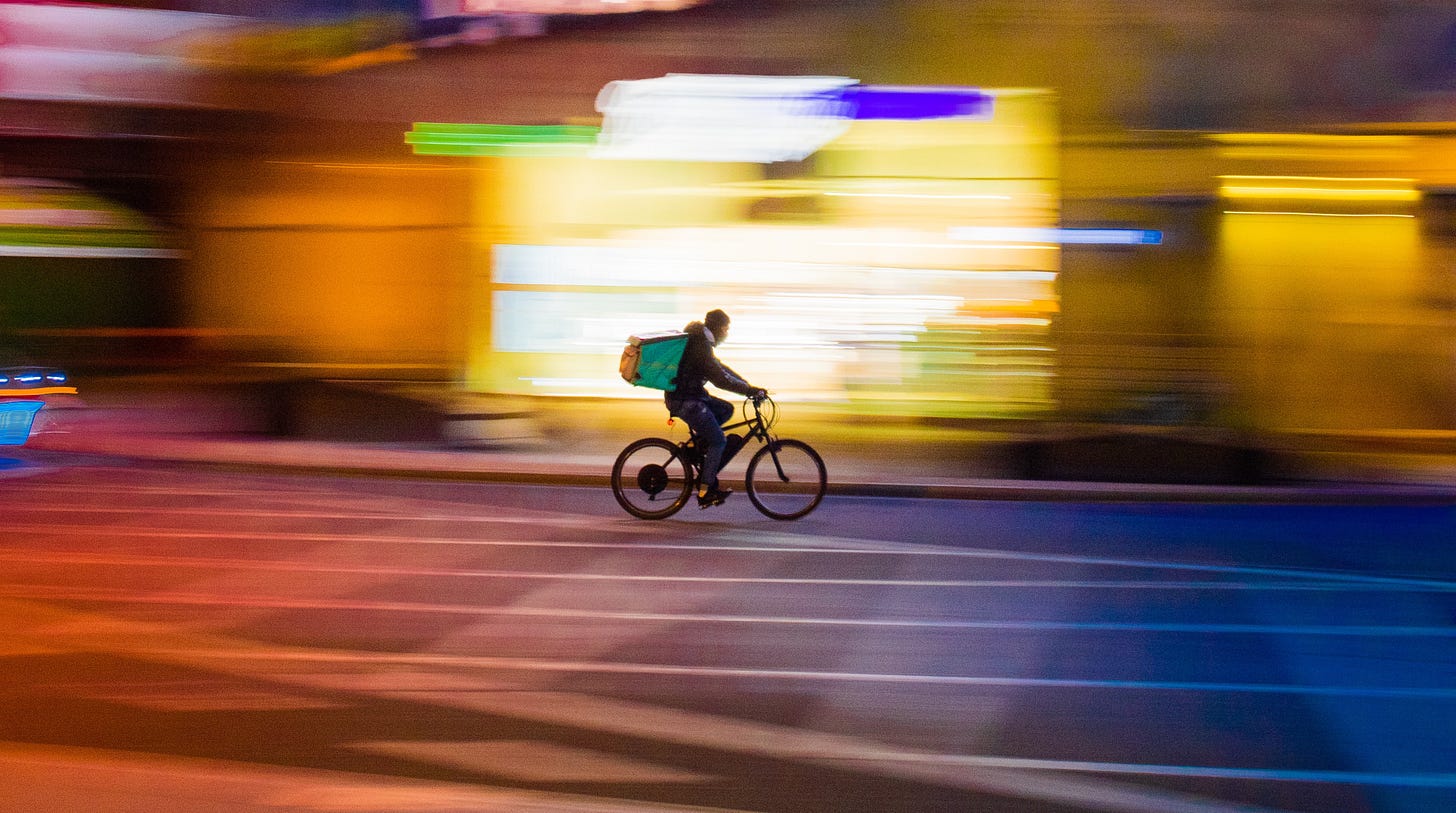The 10-Minute Grocery Delivery Race
In the whirlwind of innovation, the promise of delivering groceries in just 10 minutes captured our imagination. The buzz around startups rapidly delivering groceries in 2021 seemed unstoppable, fueled by investment from dreaming investors in Europe. But when the dust settled, the landscape changed. Some players retreated, while others held on, convinced that the real growth story was just beginning.
A Quest for Impactful Markets
TAM and the Illusion of Trends
In the startup world, chasing the "next big thing" can be tempting, but sustainability requires more. The key is to find a market with true transformational potential. Fast commerce, in its race to redefine spending, relies on a critical factor: the Total Addressable Market (TAM), which is the total potential market for a product or service. It is not just about the trend of the moment, but about envisioning a lasting impact.
From Aisle to App: Building User Habits
Changing the way people do grocery shopping is no easy task. It is not just about convenience, but about changing deeply rooted habits. The success of quick grocery delivery depends on offering more than just in-person grocery substitution. It is about creating a truly engaging experience. Convenience alone is not enough; you need a unique selling proposition that goes beyond the ordinary.
The challenge of creating a new market
Building a market from scratch is a double-edged sword. If the promise is immense, so are the challenges. Rapid commerce startups have taken on the daunting task of creating demand that was not entirely there before. However, the journey is not only about attracting customers, but also about turning them into loyal customers. It is not just about a transaction, but about fostering a relationship.
The Network Ripple: Effects and Economies
The road to success is not only based on rapid growth, but also that of sustainable growth. The magic of network effects and economies of scale certainly play a key role. It is these factors that can turn a money pit into a cash cow. But patience is key: these effects take time to materialize. The challenge is to balance short-term sacrifices with long-term gains.
Speedy Grocery Across Europe: Who's Still in the Game?
Investment dreams and consolidation realities
The European fast food delivery landscape was electrifying, with investment estimated at up to $5.5 billion by 2021. By that year, the industry landscape was characterized by a steady influx of new companies securing ever-increasing funding every week. However, reality took hold, leading to consolidation. Some operators collapsed and others struggled to keep their valuation afloat.
Balancing profitability while remaining competitive and ensuring rapid operations becomes a challenge, and this is where venture capitalists (VCs) play a key role. Often compared to steroids for startups, their influence has undoubtedly propelled the industry's growth. This could sometimes lead to Venture Predation, a phenomenon I explored in a previous article, warning of potential challenges in the ecosystem.
Balancing Profitability in a Rapid Landscape
In addition to external investments, there are some strategies that can help maintain profitability:
Increasing Basket Size and Delivery Efficiency: Enhancing the volume of items per delivery and deliveries per hour is a pivotal consideration. This might necessitate reimagining delivery processes, such as using larger backpacks or transitioning from bikes to vehicles for increased capacity.
Optimizing Assortment Margins and Costs: Focusing on optimizing margins is paramount, especially for perishable products like fresh fruits, meat, and dairy. These products often require expensive refrigeration at warehouses and during transit, contributing to elevated operational costs and potential waste.
Streamlining Rider Cost Structure: As the pool of available riders becomes constrained, it could lead to upward pressure on wages. Thus, revisiting the cost structure of riders becomes crucial to maintain viability.
Survivors in the arena
When the dust settled, a handful of players remained on the battlefield. Getir, Flink, Zapp and GoPuff are a testament to resilience. Each of them has a story of conquering markets, challenging and evaluating. Their paths embody the resilience needed in this ever-changing industry.
The landscape is constantly changing, as are consumer preferences. From pandemic closures to redefining post-pandemic normalcy, the appetite for fast grocery delivery has changed. It is no longer just about speed of delivery, but about meeting evolving customer needs.
It's not enough to survive, it's time to grow
In the quest for survival and success, operators are recalibrating their strategies. Getir's closures, Zapp's London aspirations, and Flink's resilient attitude each offer a unique lens on survival tools. Adaptability is the mantra, and survivors are rewriting the rules.
Opportunities on the Delivery Horizon
There are some promising opportunities that could help players still in the game, such as:
Investment in Advertising and Last-Mile Services: Strategic investment in advertising or the enhancement of last-mile services can significantly augment a company's market presence and customer engagement.
Taking a Holistic Approach - The Glovo Model: Glovo stands as a prime example of the "deliver everything" strategy, catering to diverse consumer needs under a single platform.
Owning the Last-Mile: Ownership of the last-mile delivery holds immense strategic importance for retailers. This access to customers' doorsteps and the cultivation of trust directly correlate to higher customer satisfaction and business growth.
Investments and Innovations
Consolidate or Conquer
In the grand game of chess, consolidation and strategic acquisitions are at play. But is the best move to acquire, or is there value in letting competitors fold? The strategy could determine who emerges as the ultimate victor.
Subscription models and beyond
In a world where convenience reigns, subscription models are emerging as a way to ensure customer loyalty. The concept is not entirely new, but its application to fast commerce is reshaping the game. Instead of quick deliveries, companies are offering customers the convenience of regular, scheduled deliveries. This approach not only makes life easier, but also ensures a steady revenue stream for businesses.
Beyond subscriptions, the horizon of innovation is widening. From personalized recommendations based on past purchases to intuitive interfaces that understand preferences, the goal is to make shopping not only fast but also enjoyable. The era of one-size-fits-all is disappearing, and tailored experiences are taking center stage.
Reimagining Sustainability: French and Italian Pathways
The quest for sustainability has found its way into the speedy grocery realm, weaving a responsible thread into the tapestry of convenience. In France, La Tournée has adopted a novel approach. Instead of immediate, on-demand deliveries, the company offers customers the flexibility to choose a day for their grocery deliveries. This shift to scheduled deliveries not only streamlines operations but also reduces the carbon footprint associated with rushed deliveries.
Italy's Babaco Market takes sustainability a step further. With a focus on locally sourced produce, this startup combines the convenience of quick grocery delivery with an eco-conscious ethos. By connecting customers with products from Italian farmers, Babaco not only supports local economies but also encourages a more sustainable approach to consumption.
What’s next?
The journey of speedy grocery delivery is far from over. It's a story of dreams and challenges, of valuations soaring and dipping. Lessons abound for those willing to listen: innovation is born from genuine problems, resilience is the armor, and adaptability is the lifeline. As the dust settles and the quick-commerce landscape matures, the true transformation lies in embracing change and shaping the future of how we put food on our tables.











